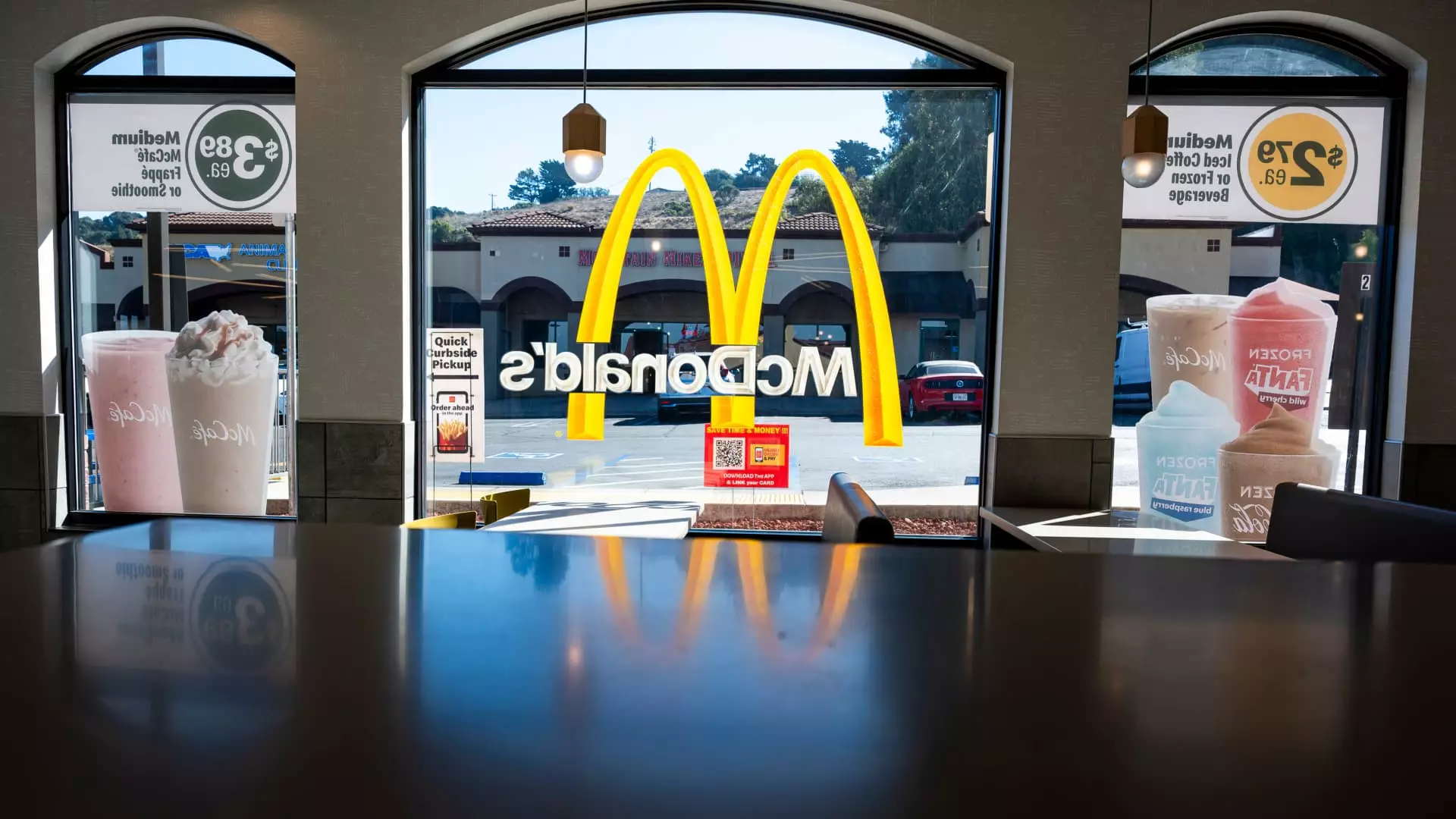Revitalizing the Restaurant Industry: A Look Ahead to 2025

The restaurant industry has faced unprecedented challenges over the past year, yet within this turmoil lies a glimmer of hope as leaders begin to pivot towards a more promising 2025. Executives at the forefront of major chains, like Kate Jaspon, CFO of Inspire Brands (parent company of Dunkin’), are keen to leave behind a tumultuous 2024. This eagerness stems from alarming statistics, such as the significant surge in restaurant bankruptcy filings—a staggering 50% increase compared to the previous year. This year has marked a downward spiral in customer traffic across eateries that have been operational for over a year, reflecting a broader malaise affecting even the biggest names in the industry.
Despite these hurdles, the potential for recovery seems plausible, especially as the industry starts to witness some positive signs. Factors such as a slight uptick in customer traffic and the long-awaited reduction in interest rates are generating cautious optimism among restaurant executives, giving rise to discussions about growth and resilience in the face of adversity.
A noticeable shift appears to be brewing within the market. Data from Revenue Management Solutions indicates a 2.8% growth in fast-food restaurant traffic in October compared to the same month last year. This trend marks a hopeful turning point, validated by claims from brands like Restaurant Brands International that reported increased same-store sales during the same period. Such developments provide a narrative of steady progress, suggesting that the restaurant sector might be attempting to shake off the effects of prior downturns.
The recent cuts in interest rates instituted by the Federal Reserve add another layer of optimism. These reductions make financing for new restaurant endeavors not only cheaper but also more appealing. As restaurants recalibrate from pandemic setbacks and tap into pent-up post-COVID demand, the predicted easing of credit conditions could significantly influence consumer behavior. Higher confidence among consumers can lead to increased spending, particularly in the dining sector, where psychological factors often dictate purchasing habits. Businesses like Shake Shack, which have thrived in this challenging environment, are poised to capitalize on this renewed consumer confidence.
As the restaurant landscape adapts, hopes for initial public offerings (IPOs) are also on the rise. Experts, including Damon Chandik of Piper Sandler, express cautious optimism about the eventual return of restaurant IPOs, hinting at potential ventures in the coming year. Currently, the market has seen stagnation following the successful debut of Cava, which has experienced a staggering 500% increase in its stock value since launching in June last year. Nonetheless, major players like Panera Bread have yet to proceed with their IPO plans, indicating a cautious approach amid unpredictable market conditions.
Inspire Brands, with its diverse portfolio, remains a strong contender for a groundbreaking IPO in the near future. The collective clout of brands including Dunkin’ and Buffalo Wild Wings could herald an industry renaissance, attracting investor interest once market conditions stabilize.
However, this optimistic outlook is tempered by the reality that not all is well within the industry. Chief Financial Officer of Portillo’s, Michelle Hook, reminds us of the continuing challenges facing fast-casual chains, evidenced by three consecutive quarters of declining same-store sales. Portillo’s decision to eschew aggressive discounting strategies employed by competitors, such as McDonald’s, points to ongoing struggles over profitability, suggesting that the battle for consumer dollars will intensify in 2025.
The impending “value wars” may continue to apply pressure on profit margins, with chains scrambling to devise strategies that win back customers without sacrificing financial health. McDonald’s, for instance, is anticipated to broaden its value menu offerings as part of this competitive landscape.
While the specter of bankruptcy looms for struggling establishments, the broader economic outlook, including the prospect of a recession, seems less likely. Nevertheless, it may take consumers some time to fully recover from the repercussions of sustained high costs, necessitating patience and strategic maneuvering on the part of restaurant operators.
As the restaurant industry steers through a complex array of challenges and opportunities, the prevailing sentiment among executives seems to favor resilience and adaptability. The mixture of optimism fueled by recent metrics and caution resulting from ongoing struggles encapsulates a dynamic phase for the industry. The road ahead is fraught with potential pitfalls, yet also abundant with the possibility of revival. With strategic planning and an acute awareness of the evolving landscape, the sector holds the promise of reinvention as it transitions into 2025.





